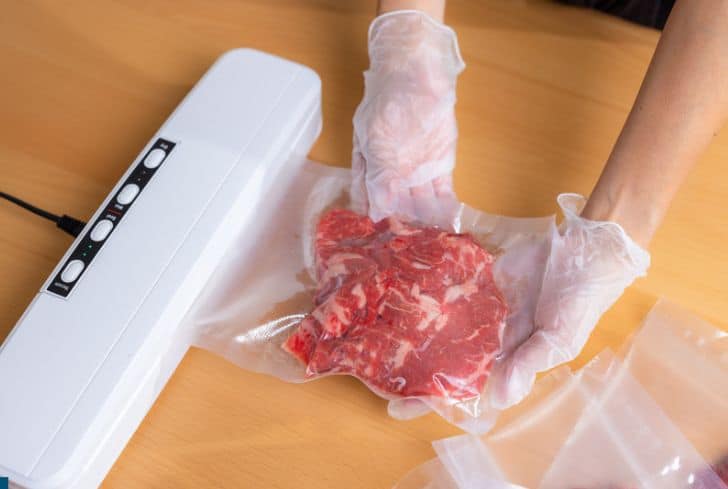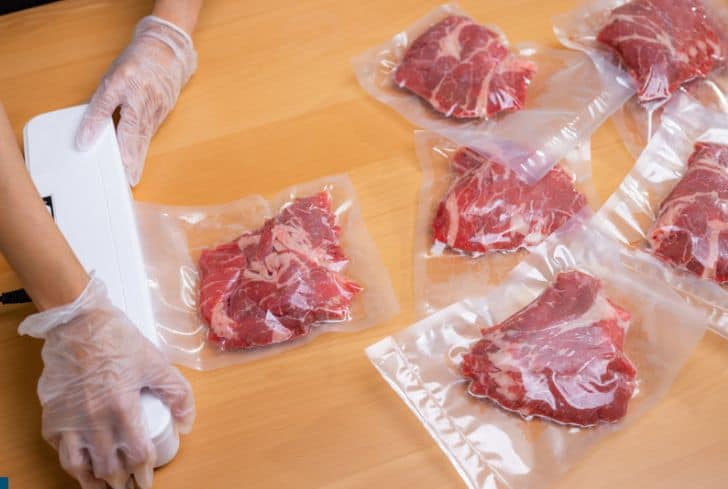As an enterprise owner, you know how important it is to guarantee that your products and goods get to their destination in the safest manner possible. This is mostly possible because new products are covered in shrink wrap, which protects them from damage.
However, most business owners and warehouse managers need to learn how to dispose of shrink wrap properly. Hence, they dump them into landfills, affecting the environment. This raises the question of whether shrink wrap is recyclable; dive in to find out!
What is Shrink Wrap?
Shrink wrap, known as shrink film, is created from polymer plastic. It shrinks snugly over whichever it covers when heat is placed on it. A portable heat gun or a conveyor belt with a heat tunnel can be used to apply heat to the item and film.
Polyolefin is the shrink wrap that is most frequently used. There are numerous thicknesses, shrink ratios, strengths, and clarities available. Both crosslinked, and non-crosslinked versions of the two main films are possible.
Laminations and co-extrusions are offered for specialized mechanical and barrier qualities for shrink-wrapping food. Due to its affordability and lightweight, PVC is the most popular shrink wrap.
PVC is robust and useful for a variety of tasks. However, because it can emit a potent, hazardous stench, it should only be employed in a well-ventilated location.
Due to the dangerous products that PVC’s breakdown produces, it has been outlawed in several nations. PVC has some drawbacks, including a low shrink force, the inability to be bunched, and the production of carbon deposits.
Shrink wrap is placed around or over the target object, frequently using automated machinery. It is subsequently heated using a heat gun, placed in a shrink tunnel, or placed in an oven to shrink.
Buildings can be wrapped with shrink wrap. Following hurricanes, earthquakes, tornadoes, and other natural calamities, it can envelop roofs. Asbestos, lead, and other hazards can be safely eliminated by using shrink wrap as environmental containment.
Can You Recycle Shrink Wrap?
The majority of shrink film is, in fact, recyclable because it is made of recyclable plastics, which many people are unaware of. Since most cities need more recycling centers for soft plastics, many people incorrectly believe that shrink film cannot be recycled.
However, certain businesses in the waste management sector, like Rubicon, provide recycling services and initiatives tailored to the recycling of shrink films. Using a baler is the greatest approach to ensure that the shrink is properly recycled.
Unlike hay balers, which wrap film around products, these machines bundle spent shrink film into bales, which are then periodically collected for recycling. A scheme like this could or would not make sense for your business based on the dimensions of your packing line.
Large companies that produce high volumes of utilized films can offset the cost of implementation by providing reimbursements for properly baled films.
Shrink wrap can be recycled anywhere that takes plastic bags, including neighborhood recycling facilities and supermarkets. Keep in mind, though, that there are other uses for shrink wrap besides house moving.
Any form of plastic wrap previously used to cover food or other purposes may tempt you to bring it along. Unfortunately, the contamination in these instances prevents the wrap from being recycled.

Is Shrink Wrap Environmentally Friendly?
Not all shrink wraps are environmentally friendly; however, you can purchase some eco-friendly shrink wraps. An eco-friendly shrink wrap is a high-quality solution that may be utilized for food and medical services.
It can transport and store machinery and equipment that must be maintained as sterile as feasible. An antimicrobial coating on Bio Shrink shrink wrap stops bacteria from growing on or underneath the shrink wrap.
They also make sure that this shrink wrap is safe for the environment. This antibacterial coating poses no environmental or natural threat. This indicates that it can be utilized outdoors on equipment without worrying that it will hurt the environment’s flora and animals after becoming wet or damaged.
Any mold, mildew, or bacterial growth must be removed from any equipment utilized in the food and medical industries. However, eco-friendly shrink wrap is only useful in some sectors of the economy.
Renovation and construction projects frequently take a long period. Building supplies can be exposed to the elements for extended periods. During this time, wood and other exposed materials are frequently susceptible to mold or mildew growth.
People will want this to be safe from their new construction projects. While the project is being finished, BioShrink shrink wrap can stop this growth.
Crawl spaces, garages, and basements can be open all year round, employing BioShrink. Sometimes the construction of these sites could be better. Certain seasons can cause them to become musty and wet.
To prevent mold growth in various parts of your home, you can line a space or room with BioShrink. This aids in reducing allergies and other negative effects on health that mildew and mold growth may have.
Is Shrink Wrap Biodegradable?
Shrink wrap is not completely biodegradable. Shrink wrap that degrades naturally was formerly only a pipe dream for the packaging sector. However, several advances in shrink-wrap technology have created “functionally biodegradable” shrink-wrap films.
Simply put, a shrink-wrap film must decompose with the aid of bacteria or other microorganisms under natural circumstances to qualify as “biodegradable.”
Decomposition produces water, biomass, and CO2 as byproducts. There currently needs to be a movie on the global market that fully satisfies this demand. In this situation, there is a risk that any stated breakdown will only be used as a cover for hiding the underlying product’s presence in the environment.
That is to say, even if items were entirely “biodegradable,” the concept of discarding them is incorrect. Shrinkable biopolymer-based polymers derived from plants like rice are used to create biodegradable shrink film.
Compared to conventional plastic films, which can take up to 1000 years or more to biodegrade completely, these bio-plastic shrink films break down far more quickly.
Bio-plastic shrink films may be of interest to those seeking an environmentally friendly substitute for conventional shrink films. These movies are a catch-22. Biodegradable plastics cannot be recycled, despite degrading far more quickly than conventional plastics.
Is Shrink Wrap the Same as a Plastic Wrap?
Both shrink wrap, and plastic wrap are employed for efficiently packing items. Even though both shrink wrap and plastic wrap are created from different types of plastic, people often need clarification on the two because of these differences.
Here are the differences between shrink wrap and plastic wrap:
Shrink wrap and plastic wrap are two different types of packaging materials that serve different purposes. Here are some differences between the two:
- Material: Shrink wrap is made of a thicker and more durable plastic material, while plastic wrap is made of a thinner and more flexible plastic material.
- Usage: Shrink wrap is used primarily for packaging and protecting products during shipping and storage, while plastic wrap is used primarily for wrapping and covering food items to keep them fresh.
- Sealing: Shrink wrap requires heat to seal the edges and create a tight seal around the product, while plastic wrap can be easily sealed by pressing it together.
- Transparency: Shrink wrap is usually clear and transparent, while plastic wrap can be either clear or opaque.
- Durability: Shrink wrap is more durable and resistant to tearing and punctures than plastic wrap, which can tear easily.
- Cost: Shrink wrap is more expensive than plastic wrap due to its thicker and more durable material and the need for heat sealing equipment. Plastic wrap is relatively inexpensive and widely available.
Overall, shrink wrap is a heavier-duty packaging material used for industrial or commercial purposes, while plastic wrap is a lighter-duty material used primarily for household purposes
In industrial settings, however, each has distinct functions and cannot be used interchangeably. It is advised that shrink and plastic wrap be used separately because they are designed for different activities.
Be careful not to try to use shrink wrap where plastic wrap ought to be used because that will likely make the process impossible.
Alternatives To Shrink Wrap
Customers are the ones who are driving the demand for environmentally friendly packaging options. Responsible consumers and company owners want to avoid excessive packaging, even if it may be recycled or made from a renewable resource.
They now expect that environmentally friendly packaging be created using environmentally friendly methods. Reduce the quantity of plastic waste you produce by switching from conventional shrink wrap to more environmentally friendly substitutes.
For your consideration, here are some of the top alternatives to shrink wrap.
Flow wrap
It is appropriate for heat-sensitive products since flow wrap uses cold seal pressure-sensitive tape to achieve product sealing. Compared to heat-sealing techniques, filling and sealing are quicker; however, cold sealing flow wrapping machines frequently have greater costs per sealed unit.
Overwrapping
Once more, a previously required heat technique is modified to offer cool overwrap options. When the contents cannot be wrapped with anti-fog or shrink film, this offers advantages.
Packing for artisanal goods can be made using eco-friendly corn-based materials in conjunction with paper laminated overwraps or perforated for packing fresh vegetables. The dwell time is reduced when pressure rather than heat seals.
Conclusion
Even though packaging plastics like shrink film will continue to be a contentious topic of discussion for years to come, they remain your best option for an economical and environmentally safe packaging foundation that can effectively, securely, and powerfully package your items.
Establishing a shrink film recycling strategy may be a fantastic solution for truly environmentally conscious organizations of a particular size to lessen further their impact on the globe, its oceans, and overall well-being.






